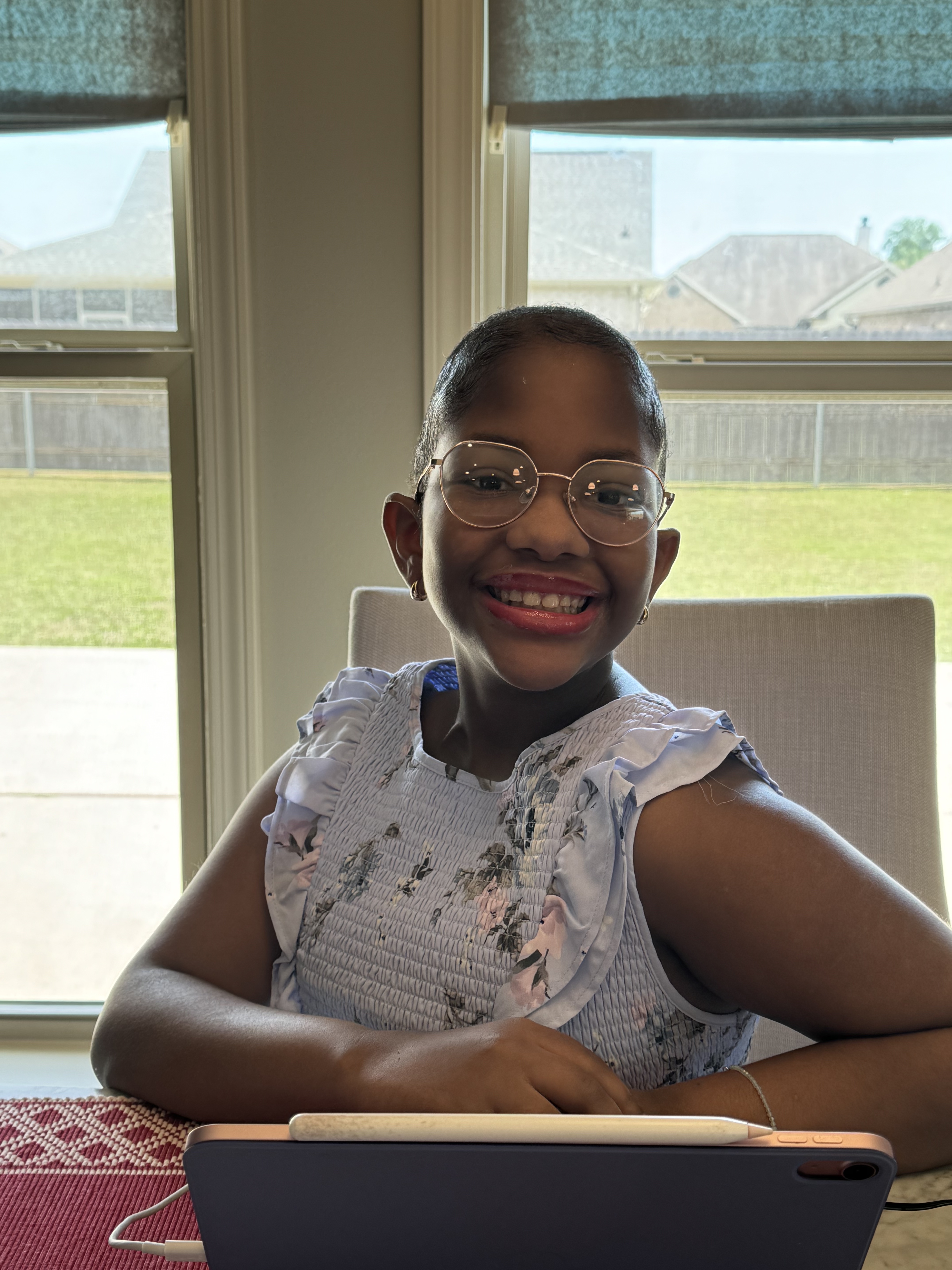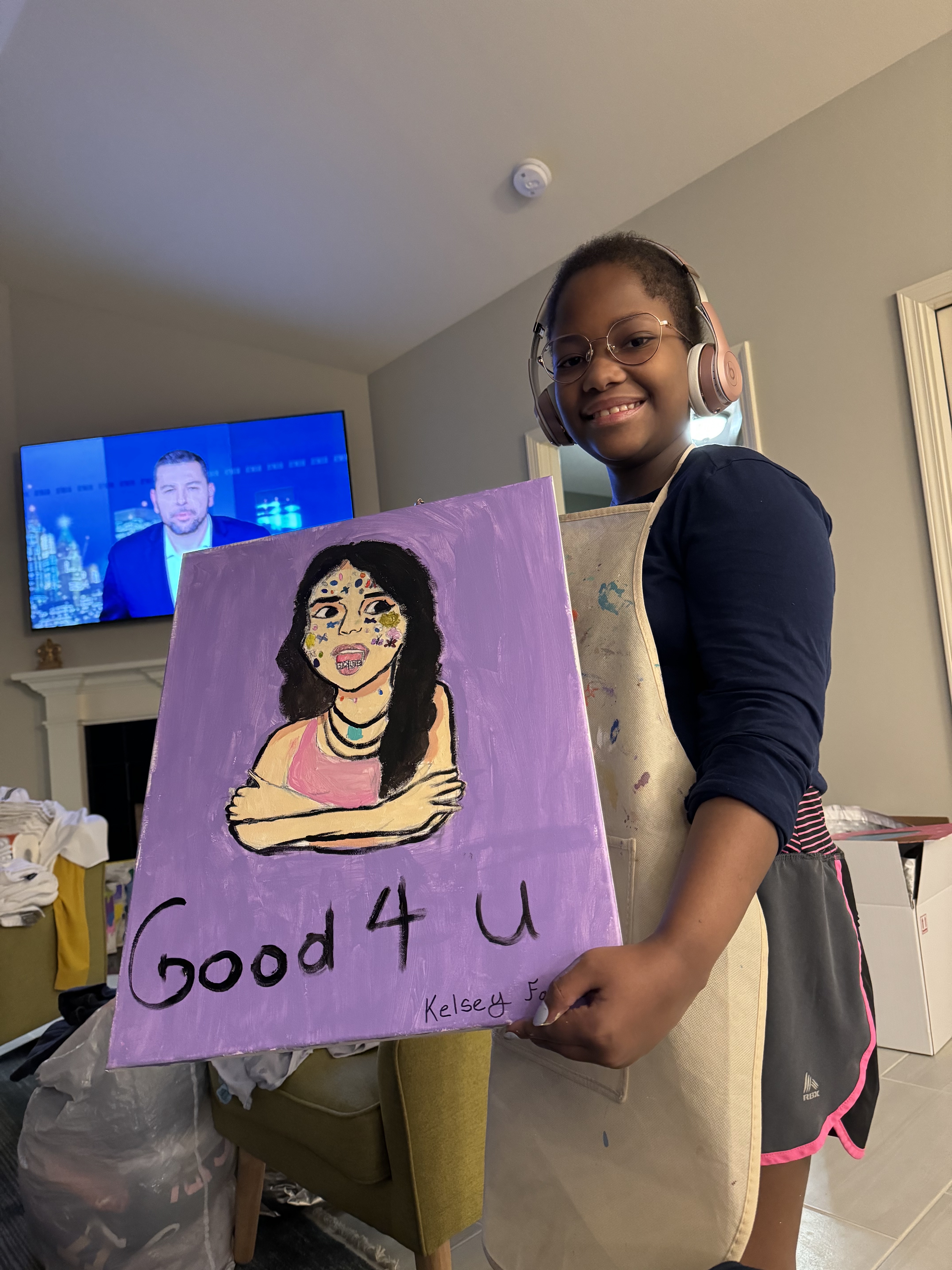Kelsey’s story: Managing sickle cell disease through specialized care and a selfless donor
- Category: Patient Stories
- Posted on:

Kelsey Farris, now 12 years old, was diagnosed with sickle cell disease (SCD) immediately after birth. Today, she is doing well thanks to the exceptional care and treatment she received at Children’s Hospital New Orleans—but her journey to this point was not easy.
As a newborn, Kelsey was diagnosed with Hemoglobin SS, or sickle cell anemia, the most common and severe form of sickle cell disease. This condition arises when an individual inherits copies of the hemoglobin S gene from both parents, resulting in hemoglobin known as Hb SS. As the most severe type of SCD, individuals with Hb SS often experience more intense symptoms more frequently.
Kelsey was born at a local hospital in Baton Rouge, LA, but she was transferred to Children’s Hospital New Orleans at just one month of age to receive the highest level of care available in the region for sickle cell disease. 
The Comprehensive Sickle Cell Disease Treatment Program (SCDTP) at Children's Hospital New Orleans, along with its satellite locations throughout Louisiana, provides the most advanced, comprehensive care for children with SCD and other hemoglobinopathies in Louisiana and the Gulf South region. The team is comprised of nationally recognized hematologists who are active members and leaders of the Louisiana Commission on SCD, The American Society of Pediatric Hematology/Oncology's Hemoglobinopathy Section, the Foundation for SCD Research, and the Sickle Cell Disease Association of Southeast Louisiana.
Kelsey stayed at Children’s Hospital New Orleans for approximately three months, receiving the necessary care and treatment to manage her condition as a newborn. She was then finally able to go home, but at 11 months old, Kelsey experienced her first pain crisis, a major symptom of sickle cell anemia. These periodic episodes of extreme pain occur when sickle-shaped red blood cells block blood flow through tiny blood vessels to the chest, abdomen, and joints. The intensity of the pain can vary and may last from a few hours to several days.
During her first crisis, Kelsey was treated at Children’s Hospital New Orleans for approximately two weeks. Treatment for pain crises varies and depends on the severity of symptoms, but it often includes managing pain with medication, providing IV fluids for hydration, and administering oxygen therapy. Additional treatments may include antibiotics for infections, blood transfusions, and medications like hydroxyurea to reduce the frequency of crises. 
"Over the course of her short life thus far, Kelsey has been hospitalized more than 20 times for symptoms related to her sickle cell disease,” said her mom, Ebony Farris. “She has endured multiple episodes of acute chest syndrome and several sickle cell pain crises. It reached a point where her quality of life was significantly diminishing because she was living with chronic pain every day, even when she wasn’t in the hospital."
After extensive conversations with her doctors at Children’s Hospital New Orleans, including hematologist-oncologists Zachary LeBlanc, MD, and Pinki Prasad, MD, it was decided that Kelsey’s best course of action was to undergo an allogeneic stem cell transplant. This type of transplant involves replacing the faulty hemoglobin-producing cells with healthy cells donated by someone else. These donor cells can come from a family member, an unrelated donor, or umbilical cord blood. If successful, this procedure can cure sickle cell disease.
Once they decided to begin the process and add Kelsey to the registry, things progressed quickly—with Kelsey matching with an anonymous donor in less than two months.
"Everything moved quickly from there, and we were just thanking God that things progressed so fast because we were told that finding a sufficient donor would be one of the biggest hurdles," said Ebony.
Prior to the stem cell transplant, Kelsey had to complete preliminary testing and had a central line placed. She then underwent a CAMPATH infusion to suppress her immune system and did a week of chemotherapy to prepare for the donor cells. Then, on November 7, 2023, she received the stem cell transplant.
"Stem cell transplant for sickle cell disease involves replacing the patient's stem cells with healthy ones from a donor,” said Dr. LeBlanc. “This process starts with chemotherapy to destroy the patient's bone marrow, where the faulty stem cells are produced. Then, we infuse healthy stem cells from a compatible donor into the patient. These healthy cells can produce normal hemoglobin, effectively curing the sickle cell disease if the transplant is successful.” 
Fortunately, Kelsey’s transplant was just that, and her bloodwork quickly showed no signs of sickle cell disease after the transplant.
Since the transplant, her mother has noticed a remarkable transformation in Kelsey, with increased energy, a greater willingness to be active, and a renewed vibrancy. Ebony expressed deep gratitude to the anonymous donor for making this possible.
“It’s hard not to get emotional when I talk about it,” Ebony said. “It was such a selfless, generous act, and it has changed my child’s life.”
Ebony added that her family is eternally grateful to the entire team at Children’s Hospital New Orleans for their expertise and compassionate care.
“From the clinic nurses and doctors to the PAs and nurse practitioners, the care has been exceptional,” Ebony said. “When Kelsey had to be readmitted for a fever, the nurses in the oncology unit were incredibly compassionate and personable. When our insurance was out of network, Dr. LeBlanc’s nurse assistant ensured everything worked out. We have been going to Children’s since she was born, and the care has always been outstanding.” 
Although Kelsey is still working to get fully back to her regular life after the transplant, she is doing well, and the team at Children’s Hospital New Orleans is excited to see her continued improvement and growth.
“Transplant for sickle cell disease is a challenging process because of the burden of disease these children have,” Dr. LeBlanc said. “Kelsey is certainly no different. While her graft function is excellent, she continues to fight with complications related to transplant. The transplant team and her family are hopeful she will be able to resume her normal activities in the new year.”
To learn more about the Comprehensive Sickle Cell Disease Treatment Program (SCDTP) at Children's Hospital New Orleans, visit https://www.chnola.org/services/hematology-oncology/hematology-services/.



